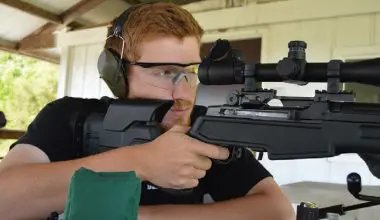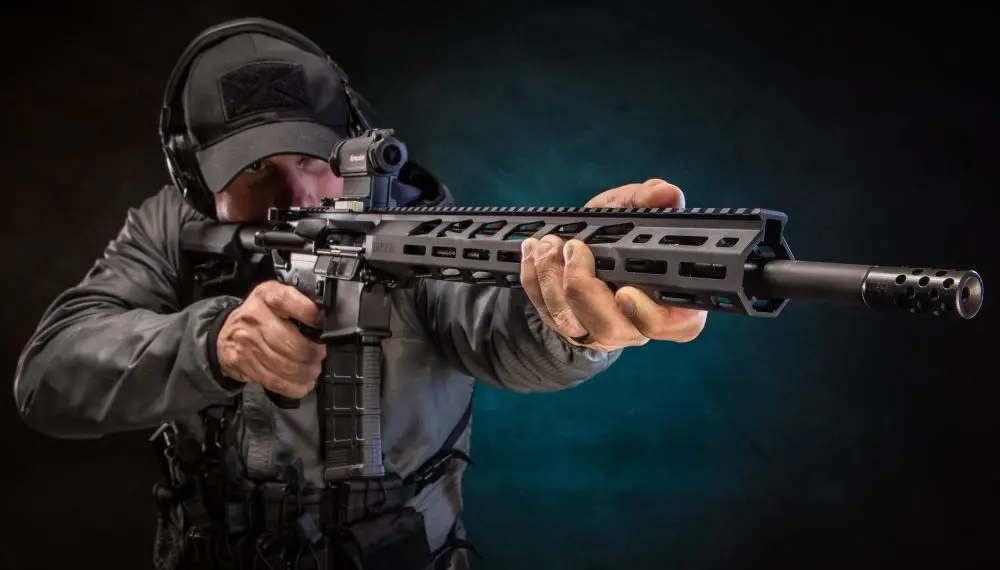
When the Glock premiered in 1982, it was met with skepticism by shooters, agencies, and politicians. Slowly at first, but then faster and faster, it came to dominate the U.S. and world police handgun markets. But it lagged behind in military acceptance.Not only were most military buyers conservative about new weapons, but they viewed the pistol as a marginally necessary piece of equipment. They had Browning Hi Powers, Makarov PMs, and Colt 1911s, as well as a few other pistols, in their armories, and they sufficed.
The rise of elite military and law enforcement counterterrorist/hostage rescue units offered some incentive to development of more effective handguns for close combat. The SIG Sauer P226 and Beretta 92 achieved some popularity with these special units, which influenced their adoption by other military units. But the Glock still lagged behind.
Of course, Austria’s GEK Cobra and Jagdkommando adopted the Glock. What other units adopted the Glock fairly early?
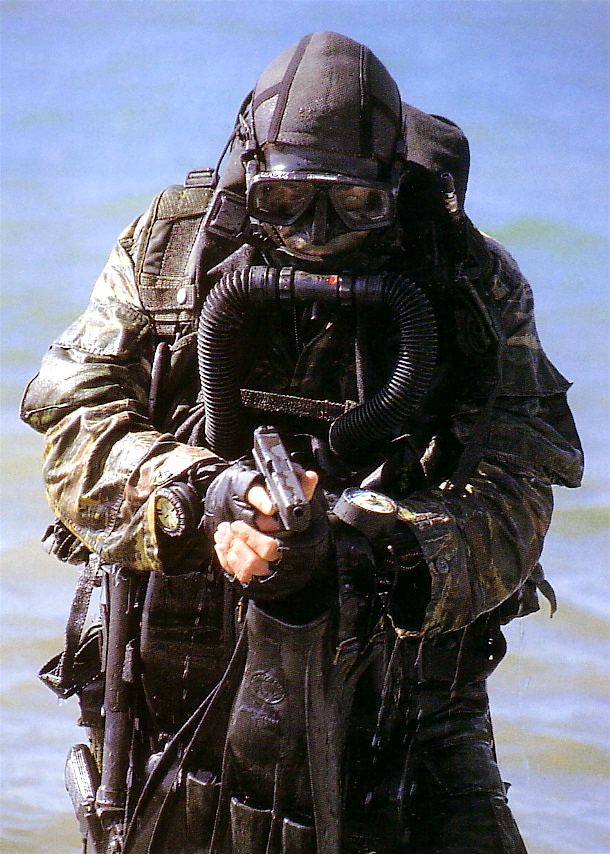
Table of Contents
EARLY ADOPTERS
When I had contacts with Greek special ops units in the run-up to the 2004 Athens Olympics, DYK, the Greek combat swimmers operating out of Crete, were using Glocks with the maritime—aka “subaqua”—firing-pin cups. I actually acquired a couple of sets of the subaqua firing-pin cups and the heavier springs from one of the DYK armorers.
The Glock turned up at another Olympics where it might not have been expected. Russia’s elite counterterror units FSB Alpha and FSB Vympel carried Glocks at the Sochi 2014 Olympics, at which time these units had already been using Glocks for quite a few years.
It is especially interesting because Alpha and Vympel would typically have been armed with the M-443 Grach, which is chambered for a hot version of the 9x19mm round and has a 17-round magazine capacity.
Although Alpha usually assaults with carbines, the shield men use Glocks. For most of the operators, the Glock (or any pistol) is the secondary weapon.
Glocks are actually assembled in Russia by ORSIS and Izhmash for use there. I believe the models available in Russia are the M17, M34, and M35.
Another counterterrorist unit that uses the Glock is Germany’s GSG-9. This is somewhat surprising because GSG-9, one of the first CT units (formed after the 1972 Munich Olympic Massacre), has used HK weapons almost exclusively throughout its existence.
GSG-9 uses the Glock PM made especially for them and designed for use in salt water. It uses the subaqua firing-pin cups, a harder-striking 28-Newton firing-pin spring, and a magazine with a large drain hole in the bottom. GSG-9 may continue to use HK USP pistols for some operations.
France’s GIGN CT unit and GSPR Presidential Protection Unit used Manurhin MR 73 revolvers for many years but eventually replaced them with Glocks. GSPR goes through selection and training similar to GIGN, though with more emphasis on close protection. The last time I had contact with them, they were issued both a Glock 17 and a Glock 26, the latter for deep concealment or backup. GIGN uses Glock 17s.
French Army Special Forces units also use the Glock 17. Members of the Division Action, the paramilitary arm of France’s DGSE intelligence agency, also use Glocks, including suppressed Glock 19s.
FBI HRT
Another counterterrorist unit that has used the Glock is the FBI Hostage Rescue Team (HRT). Although as this is written, the HRT still uses their custom Springfield Armory 1911 pistols, many operators are now using the Glock instead of—or in addition to—the 1911.
Members of the HRT were deployed to Afghanistan and Iraq on antiterrorist operations and found the Glock to be a useful choice on those operations. Many have continued to use the Glock.
Recently, the FBI adopted the Glock 17M and 19M in 9x19mm to replace the .40 S&W Glocks that had been standard issue. Presumably the new Glocks will be available to members of the HRT.
Israel’s Yamam CT unit, part of the Israeli Border Police, uses the Glock 17, 19, and 26. Some Glock17s marketed to the Israelis had an external safety, though I don’t believe the Yamam use these.
BRITISH UNITS
Conditions in Afghanistan, combined with the age of the Browning Hi Powers that were standard issue for British troops, led to U.K. adoption of the Glock 17. The capability of the Glock to be carried ready for action was a point in its favor, since troops serving in Afghanistan and Iraq faced the danger of their “allies” turning on them.
While Army units and Royal Marine units had carried the Hi Power before replacing it with the Glock, the SIG P226 and P228 were normally carried by British special forces—the SAS, SBS, and SRR.
The last, the Special Reconnaissance Regiment, works undercover much of the time and therefore is often dependent on just a pistol. I don’t have confirmation that these units have switched to the Glock, but I do know that some members of the SAS and SBS were already using Glocks in Afghanistan.
The advantages of the Glock for combat swimmers have not been lost on the SBS or Boat Troops of the SAS either. It is quite possible that both Glocks and SIGs are available to the operators, as when the P226/P228 was first adopted, some of the senior members of the units were allowed to continue using their Hi Powers.
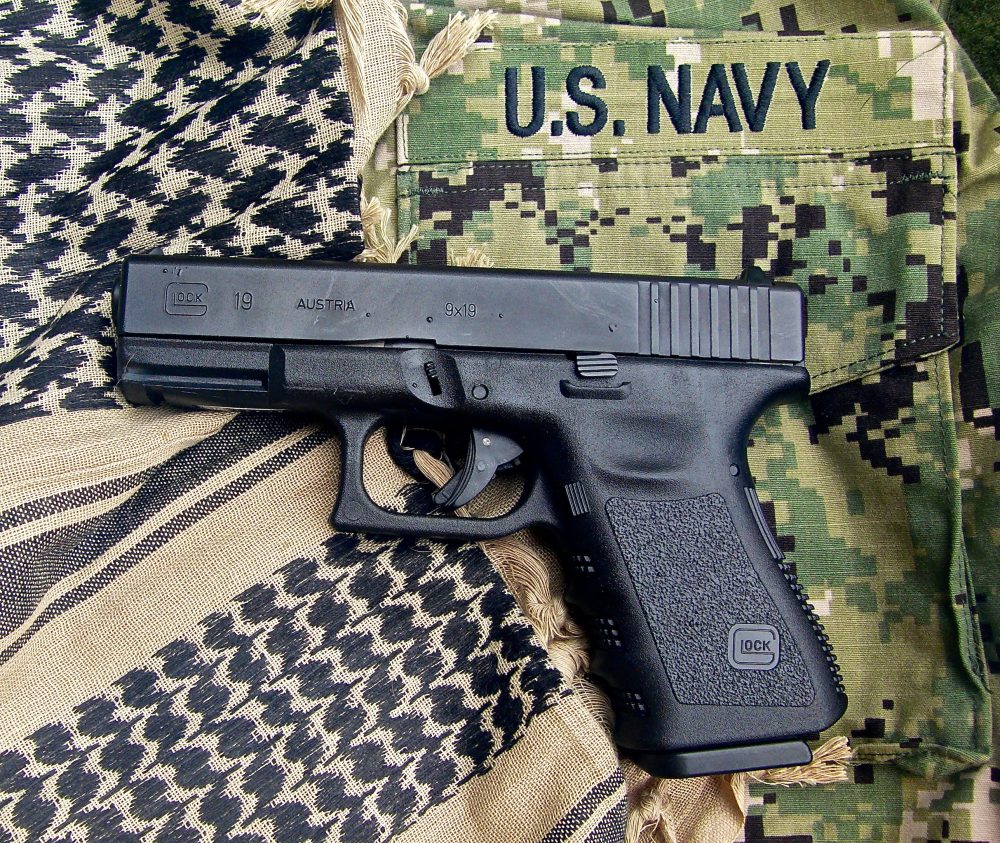
U.S. SPECIAL OPERATORS
The adoption of Glocks by U.S. special operators has followed an interesting path. At least some Glocks were in use with Special Forces in lieu of the M9. Because of the large number of Glock 19s in use with Iraqi security forces, many U.S. and British advisors adopted the Glock as well.
Somewhere in the mid-2000s, Delta (CAG) began using Glock 22s. The Rangers also had some Glock 22s. Circa 2010, SOCOM reportedly acquired 2,500 Glocks from Homeland Security, but I don’t know the specific models.
I have heard that Delta switched from the Glock 22 to the 9x19mm Glock 17 and 19 because the .40 S&W guns were not holding up to the large number of rounds that Delta fired in training.
I have been told that because both 9x19mm and .40 S&W Glocks were being used simultaneously, SOCOM ordered Flat Dark Earth .40 S&W magazines so they were immediately discernible from the standard black 9mm mags.
Some Glock 17s and 19s were fitted with threaded barrels to take AAC suppressors. As the pistol is primarily a backup weapon for special operators, the Glock 19 has proven especially popular. The SEALs had used their special “Navy” version of the SIG P226, most recently the HK MK25, but now the SEALs have adopted the Glock 19 as well.
As mentioned, the capability of the Glocks to be readily adapted for underwater use is in their favor, though the P226 Navy versions were also designed for extended submersion in salt water.
USMC MARSOC operators have reportedly been using Glock 19s. The Marines also acquired at least a small number of Glock 18s, though they were more likely for testing rather than operational use.
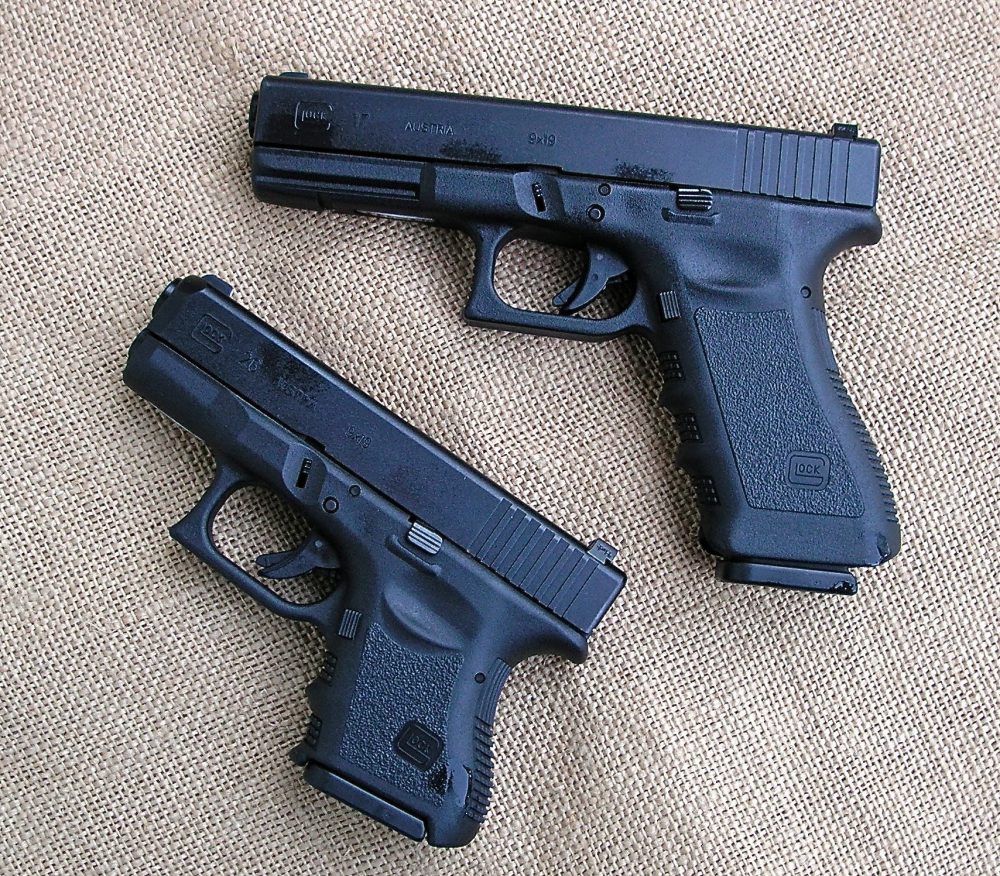
NOW WORLDWIDE
Numerous other special ops units worldwide have adopted the Glock, including the Brazilian Special Operations Brigade; Greek EKAM CT unit; Norwegian FSK; Icelandic Viking Group; Indian National Security Guards, MARCOS, and Para Commandos; Pakistani SSG; Spanish UEI; and Swiss AAD10 and FSK-17, among others.
Though the smallest special unit to adopt the Glock, Denmark’s Sirius Unit is one of the most interesting. Members patrol Greenland in two-man sledge teams. Their pistol is the Glock 20 in case they have to use it to defend against polar bears!
There are myriad reasons why the Glock has become so popular in special ops units. Cost is a factor, though most special ops units have more generous budgets than conventional military units.
An important factor is durability. Special ops units shoot their pistols more than other units, and Glocks are legendary for holding up to a lot of rounds, especially those chambered for 9x19mm.
Glocks are also easily maintained. The armorer’s course is short and the number of spare parts and tools needed to repair Glocks allows quick field repairs.
The availability of pistols in various sizes is another advantage. A unit can issue operators a Glock 17 for “green” missions and a Glock 26 for “black” missions, or the Glock 19 may be chosen as a compromise.
For units with a maritime mission, the corrosion resistance and ability to tailor the Glock for underwater usage make it appealing. Glocks are also available in blue or red training versions. UTN and Simunitions versions are especially useful for force-on-force training.
The Glock has taken longer to gain acceptance among special operations units than among police units, but that has definitely changed during the last decade.
Various factors—the increased need for “companion pistols” to be carried constantly during the War on Terror, reliability problems with some other pistols during operations in terrain encountered, the need to use the same pistols as indigenous military or police personnel being trained by special operators, speed in bringing the weapon into action, and durability during extensive training—have all contributed to the Glock’s increasing popularity.
Certainly, though, the Glock is now seen on the hips of many of the world’s most elite operators.
Leroy Thompson has trained hostage rescue, close protection, counterinsurgency, and anti-terrorist units in various parts of the world. He is the author of over 50 books on weapons and tactics and thousands of magazine articles.

